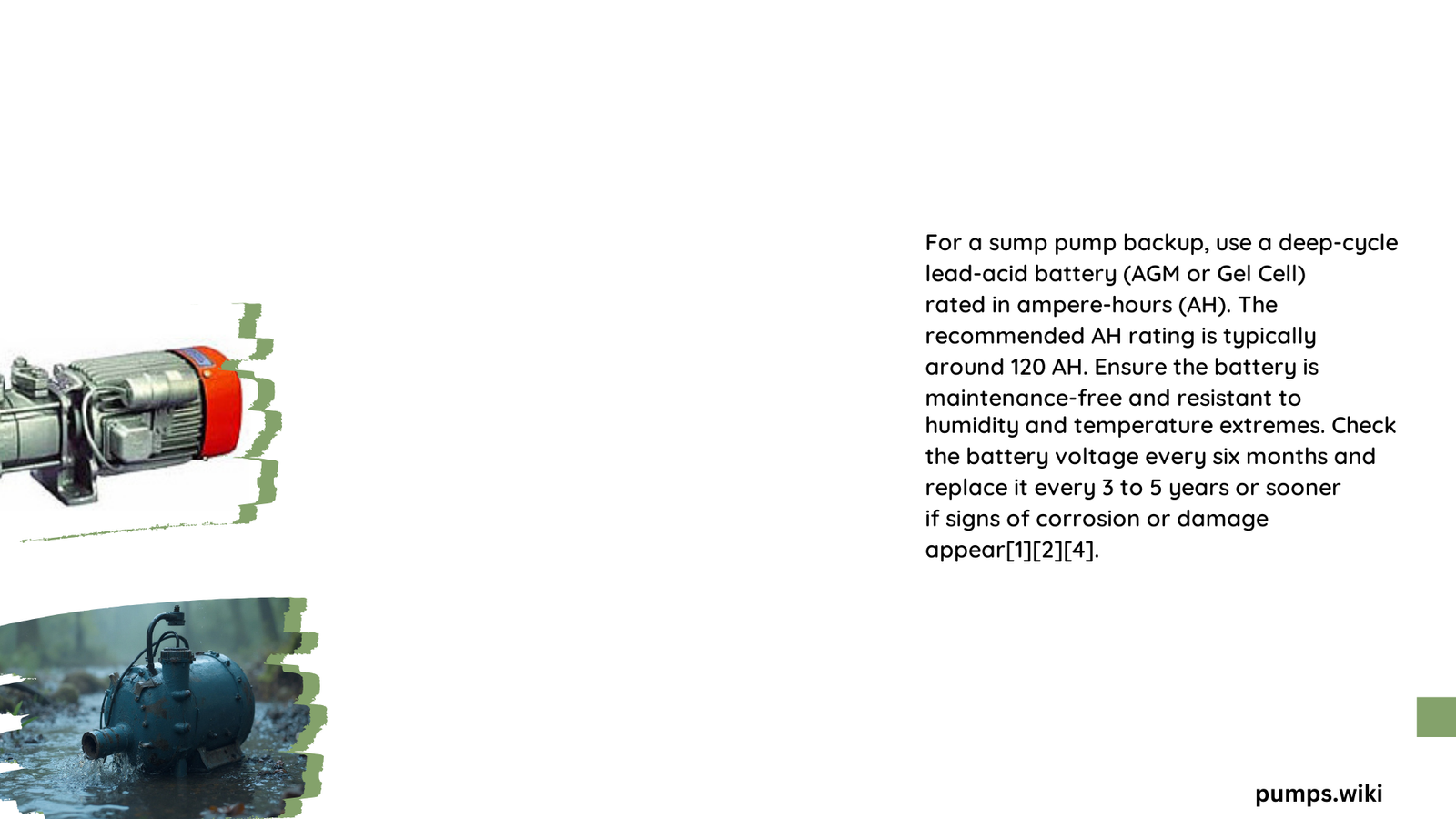Lead acid batteries are critical components in backup sump pump systems, providing reliable power during electrical outages to prevent basement flooding. These specialized batteries offer homeowners peace of mind by ensuring continuous water removal capabilities, with deep-cycle variants specifically designed to handle repeated discharge and recharge cycles in emergency scenarios. Understanding their capacity, performance characteristics, and maintenance requirements is essential for effective water management and home protection.
What Makes Lead Acid Batteries Crucial for Sump Pump Systems?
Lead acid batteries serve as the lifeline for backup sump pump operations, offering emergency power when primary electrical systems fail. Their robust design and consistent energy output make them indispensable for protecting homes from water damage.
How Do Lead Acid Batteries Perform in Sump Pump Applications?
Battery Capacity and Runtime Considerations
| Battery Capacity (Ah) | Typical Runtime | Pump Current Draw |
|---|---|---|
| 75 Ah | 7-8 hours | 8-10 amps |
| 100 Ah | 10-12 hours | 8-10 amps |
| 120 Ah | 12-14 hours | 8-10 amps |
Key performance factors include:
- Ampere-Hour (Ah) Rating: Determines total available power
- Discharge Rate: Influences continuous pumping capability
- Battery Type: Deep-cycle vs. standard lead acid variants
What Are the Best Practices for Lead Acid Battery Selection?
When choosing a lead acid battery for sump pump systems, consider:
- Compatibility with Pump Specifications
- Match manufacturer’s recommended battery group size
- Verify voltage requirements (typically 12V)
-
Confirm ampere-hour (Ah) rating
-
Battery Technology Options
-
Flooded Lead Acid:
- Lower cost
- Requires regular maintenance
- More susceptible to environmental conditions
-
AGM (Absorbent Glass Mat):
- Maintenance-free
- Spill-proof design
- Better performance in challenging environments
How to Calculate Required Battery Capacity?
Battery capacity calculation involves understanding your specific requirements:
Battery Capacity (Ah) = Desired Runtime (hours) × Pump Current Draw (amps)
Example Calculation:
– Desired Runtime: 10 hours
– Pump Current Draw: 10 amps
– Required Battery Capacity: 100 Ah
What Maintenance Strategies Extend Battery Life?
Effective maintenance strategies include:
- Regular Voltage Checks: Perform bi-annual inspections
- Proper Charging: Use specialized deep-cycle battery chargers
- Temperature Management: Store in cool, dry environments
- Clean Terminals: Prevent corrosion and ensure optimal connectivity
Recommended Lead Acid Batteries for Sump Pumps
Top recommended batteries:
- Barracuda 100 Amp Hour Battery
- 100 Ah capacity
- AGM technology
-
Approximately 7,400 gallons per charge
-
PumpSpy 75 Ah Deep Cycle Battery
- Compact design
- Compatible with multiple backup systems
- Reliable performance
What Are Common Challenges and Solutions?
| Challenge | Solution |
|---|---|
| Battery Degradation | Regular maintenance and timely replacement |
| Insufficient Runtime | Select higher capacity batteries |
| Corrosion | Use AGM or gel cell technologies |
Conclusion

Lead acid batteries remain a reliable solution for sump pump backup power, offering homeowners critical protection against potential water damage. Careful selection, proper maintenance, and understanding of battery characteristics ensure optimal performance.
References:
- [Barracuda Pumps Battery Specifications]
- [Basement Defender Battery Guide]
- [Pumps Selection Battery Review]
